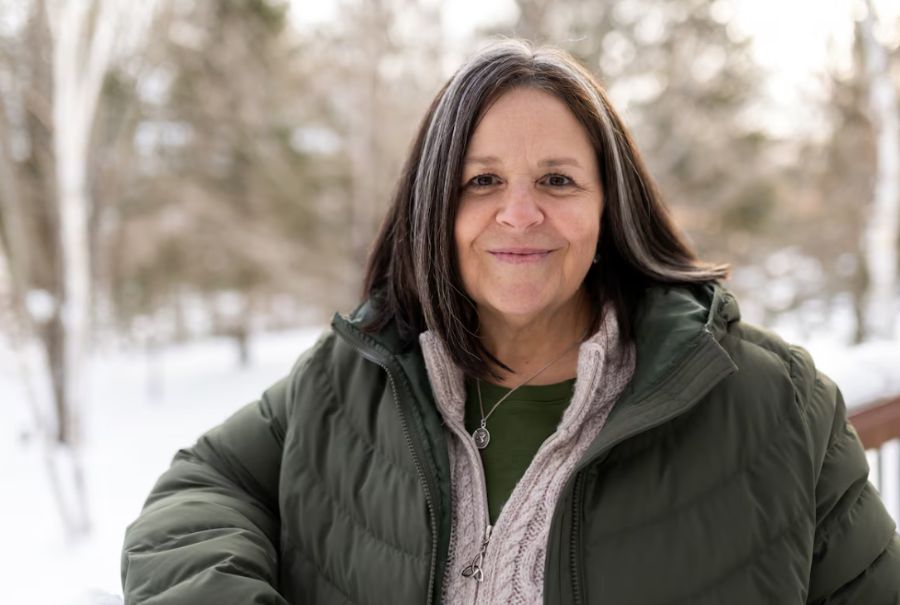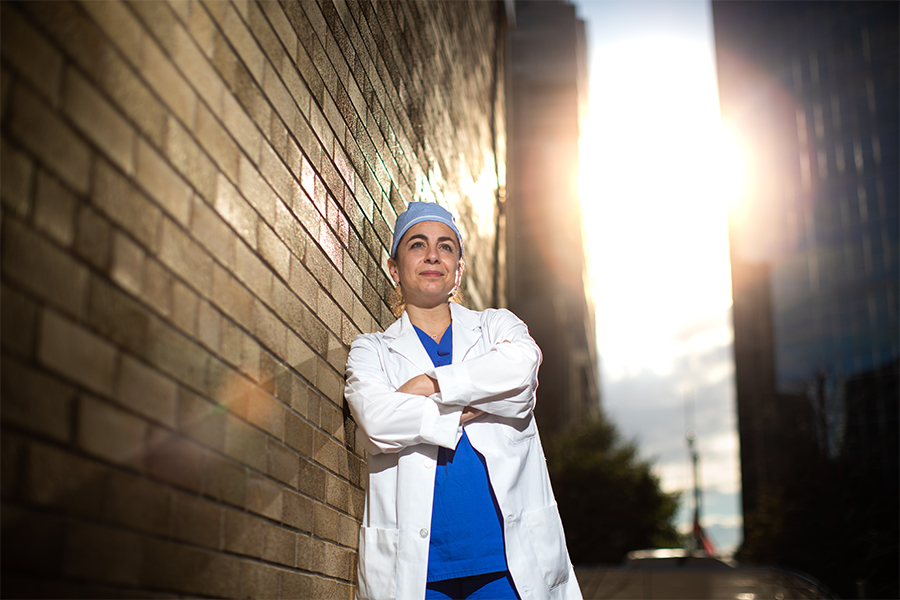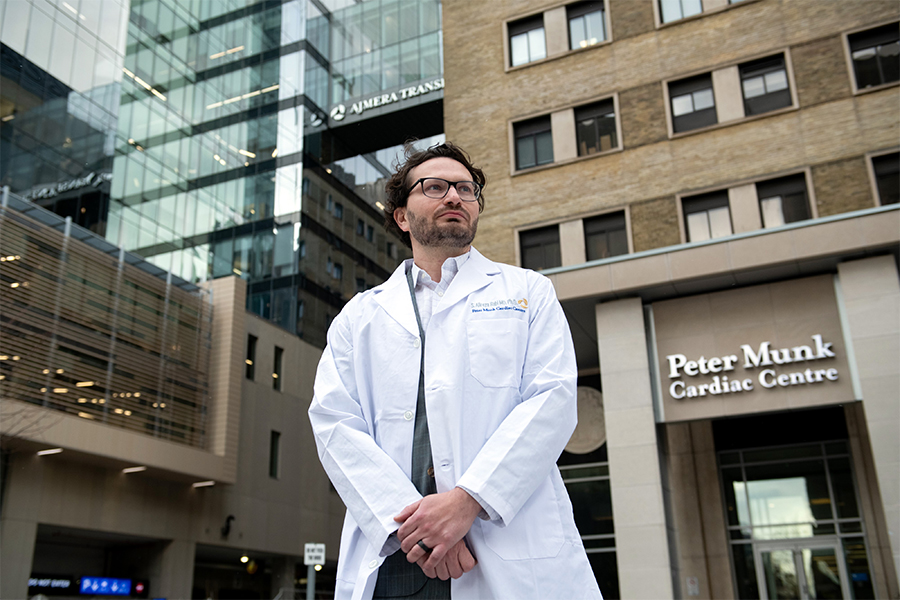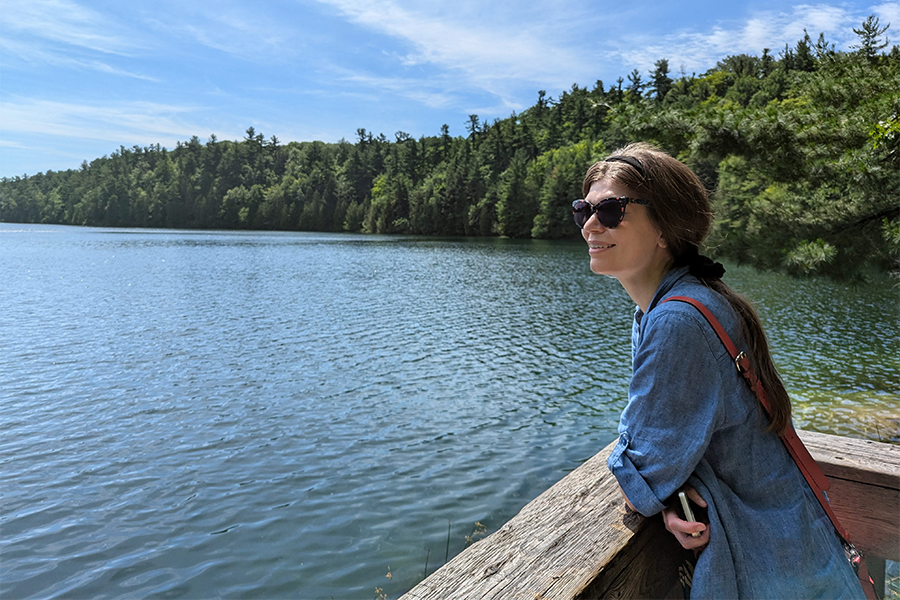
In June 2023, after her annual echocardiogram, 57-year-old Kim Rose’s cardiologist delivered the daunting, but unsurprising, verdict that it was time to refer her to a surgeon for open-heart surgery.
Kim’s aortic valve had deteriorated and was calcified and no longer working properly – the natural outcome of congenital bicuspid valve disease she’d been diagnosed with in her 30s. Kim was born with an aortic valve that had only two valve leaflets instead of three. Without surgical intervention, she faced fluid build-up in her lungs leading to congestive heart failure. Once symptoms develop, the risk of dying with untreated severe narrowing of the aortic valve is very high (50 per cent at two years) and deterioration can happen quickly.
“I had noticed I was more short of breath,” says Kim, who lives in the Algonquin Highlands in Haliburton County, Ont. “At times, I couldn’t walk up [the hill] from the lake to my house without stopping to catch my breath.”
As a former cardiac nurse, she knew the potential dangers of her condition. “I didn’t want to wait too long to have the surgery and end up with [permanent] damage to my heart,” she says. “I hoped the surgery could be done early enough to help give me the best possible outcome.”
A collaborative approach with patients in dire need
A trusted friend recommended Kim be referred to Dr. Maral Ouzounian, head of the Division of Cardiovascular Surgery at the Peter Munk Cardiac Centre and the first woman to be appointed to that prestigious position. At the initial consultation, Dr. Ouzounian’s collaborative approach struck a chord.
“She called us partners together in this, we were a team, and that really stood out to me,” says Kim.
The two agreed on a Ross procedure, a four-hour operation in which the faulty aortic valve is replaced with the patient’s own pulmonary valve, which in turn is replaced by a donated human pulmonary valve. As the country’s top destination for patients in dire need of the most complex aortic surgery, the Peter Munk Cardiac Centre is one of a handful of places in Canada that offers the procedure, which is typically performed on young or middle-aged patients with a long life expectancy.
Dr. Ouzounian explained the procedure, giving Kim confidence that this was the right route for her to take.
“It just made the most sense,” says Kim of the surgery. “[I knew] I would have a lot of years left to live if everything went well.”

‘It’s never a one-person show’
The Peter Munk Centre for Excellence in Aortic Disease is on the cutting edge of aortic care and research. The same team is able to treat every area of the aorta, from the aortic valve down to the abdomen, which is unique, says Dr. Ouzounian.
“We are very proud to tackle anything, caring for patients too complex for other centres,” she says. “We have a dedicated team with specialized skills that can treat literally any heart condition that exists, and we provide the best possible outcomes.”
Alongside Dr. Ouzounian, that best-in-Canada team that offers the Ross procedure includes congenital surgeons as well as adult cardiac surgeons Dr. Jennifer Chung and Dr. Tirone David, a long-time titan in the field. And it’s not just surgeons who deliver the excellence the Centre is renowned for, she adds. There’s a whole infrastructure around which the program is designed, from nurses to cardiologists to anesthesiologists to radiologists.
“It’s never a one-person show,” Dr. Ouzounian says. “What makes it very special is that every person along the patient’s journey is truly expert and committed to what they do. People are happy to be at work, so the energy and the atmosphere is very positive. When you’re facing a life-changing moment such as heart surgery, that reassurance can be very comforting.”
When Kim went in for her surgery in November 2024, she experienced this finely tuned orchestration first-hand. From pre-op care to post-op recovery, “I knew I was in the right place,” she says.
“I was very impressed with the level of care I received from the entire team, from the nurses, lab techs, echocardiogram and x-ray techs, housekeeping, to the orderlies and porters. They were professional, kind and respectful. Working in health care, I know how challenging it is, and they should be proud of the work that they do.”
A key part of the excellence at the Peter Munk Centre for Excellence in Aortic Disease is the collaboration between cardiology, cardiac surgery and vascular surgery. These three disciplines run the valvular, vascular and aortic programs together, enabling them to offer patients the right solution, which could be less invasive like a stent or percutaneous valve, or more involved like open-heart surgery.
“We see patients together and we are able to make the best decision for those patients together,” says Dr. Ouzounian. Patients also receive ongoing care after their surgeries, ensuring they are monitored throughout their lives.
“We have been following patients who have heart surgery at the Peter Munk Cardiac Centre since Dr. David developed the cardiac surgical database more than 30 years ago,” she says, adding that this helps researchers evaluate the outcomes to develop personalized medicine approaches for each patient.
None of this innovation and visionary thinking would be possible without donor support. Generosity is the fuel that drives the research, care and collaboration at the heart of the Peter Munk Cardiac Centre, improving the lives of patients in Canada and around the world.
The most advanced therapies and bonds that endure
Dr. Ouzounian says that the Centre’s rigorous publishing and reporting of outcomes has made it a global authority in aortic disease and an attractive destination for scientists and inventors to trial groundbreaking medical devices. In addition to delivering the most advanced aortic therapies in the world, the Centre for Excellence in Aortic Disease conducts research to investigate the genetic roots of aortic disease and test out exciting new therapies.
But Dr. Ouzounian says that beyond the research and the medical advances, positive patient outcomes are the ultimate reward for her and her colleagues.
“The bond between a patient and their surgeon – especially once you get them through surgery safely and get them home to their family – that relationship is really very special, and it’s why we do what we do,” she says. “It’s a real privilege to be part of their lives in that way.”
For her part, Kim says her recovery from her November 2024 procedure has been smooth. She says she feels fortunate to have received top-notch care at the Peter Munk Cardiac Centre and to be able to get back to her life again.
“The gratitude I feel is a bit overwhelming,” she says. “It’s so good to feel this well.”
This article originally appeared in The Globe and Mail, read it here.

No one ever changed the world on their own but when the bright minds at UHN work together with donors we can redefine the world of health care together.


